Despite being guilty of stealing a highly valuable painting, the thief received only an 8-month prison sentence.
On the morning of August 21, 1911, a quiet and damp Monday in the capital of France, Paris, three men hurriedly exited the Louvre. Strangely, the museum is always closed on Mondays, and it was even more peculiar that one of them was crouching to hide something beneath his cloak.
These men were Vincenzo Perugia and the Lancelotti brothers, Vincenzo and Michele, young craftsmen from Italy. The three had come to the Louvre the previous Sunday afternoon and hidden in a cramped storage room all night.
The next morning, dressed in white employee uniforms, they made their way to the Salon Carré, a room displaying Renaissance paintings. Targeting a small painting on the wall, they swiftly tore it from its glass frame and handed it to Perugia, who would be responsible for hiding and smuggling the painting out.
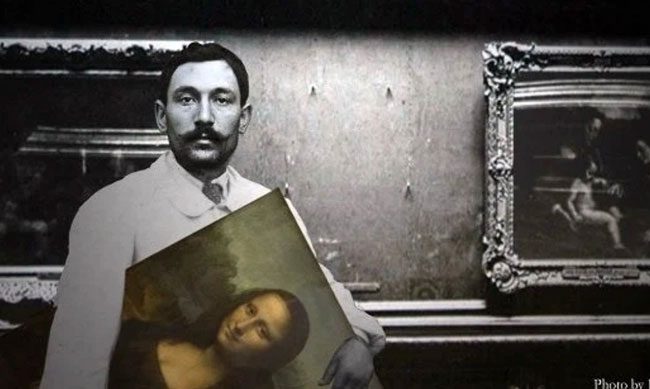
Vincenzo Perugia – the mastermind behind the Mona Lisa theft.
In the blink of an eye, the three slipped out of the gallery through a back staircase and blended into the bustling streets of Paris.
It took 26 hours for anyone to realize that one of the paintings was missing. This is understandable, as at that time, the Louvre was the largest museum in the world, with 1,000 rooms covering over 182,000 square meters.
Moreover, security was quite weak. The entire building had just over 150 guards to protect the famous artworks. Therefore, it was not unusual for some statues to go missing or paintings to be damaged.
At the time of the theft, the painting Mona Lisa by the master Leonardo da Vinci did not attract much attention. In fact, Leonardo completed this portrait in 1507, but it was not until the 1960s that art critics began to regard the Mona Lisa as a quintessential example of Renaissance painting.
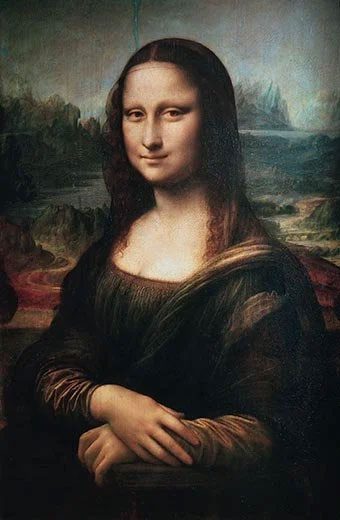
At that time, the Mona Lisa painting was not famous.
However, this perception was only recently popular among the art community, which meant that the number of visitors coming to see the artwork remained low. Even in a travel guide to Paris published in 1878, the writer Karl Baedeker only made a few remarks about this piece, far fewer than the other “gems” in the museum.
This does not mean that the painting was completely overshadowed. In 1910, an anonymous letter was sent to the Louvre threatening to steal this portrait, prompting museum officials to hire a glass installation company to “reinforce” dozens of expensive paintings.
The installation work took as long as three months, and among the hired workers was Vincenzo Perugia. He was the son of a stonemason, raised in a small village north of Milan, Italy. By 1907, at the young age of 25, he left his hometown to seek fortune in the glamorous city of Paris, settling there with three of his brothers.
At that time, Perugia was a short boy but was ready to “attack” anyone who insulted him or his homeland. He had been arrested twice, once in 1908 for trying to rob a flower seller, and the other time for carrying a gun during a confrontation.
At that time, most famous stolen paintings were not immediately sold to wealthy nobles or held for ransom; instead, they were often funneled into illegal exchange networks, used as barter for drugs, weapons, and other stolen goods. With sufficient connections in the criminal underworld, Perugia could have sold the painting quickly.
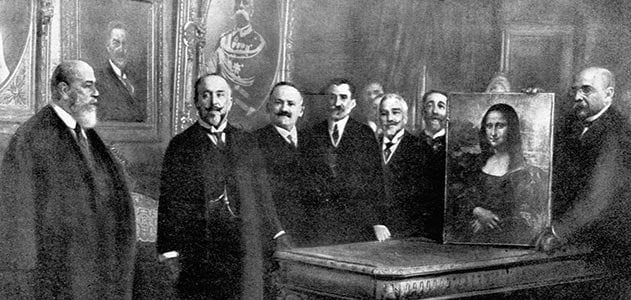
Perugia hoped to sell the painting quickly through his connections.
Unfortunately for him, the painting that seemed forgotten became so famous that no one dared to buy it. Initially, there was no news about the theft, and even the morning newspapers remained strangely silent. Could it be that the Louvre was covering up the theft and pretending nothing had happened?
But no, by the end of the third day, the media erupted when the Louvre announced that the Mona Lisa was missing. This news quickly made headlines in numerous world newspapers, and wanted posters appeared on walls throughout Paris.
Thousands of spectators began flooding into the museum just to stare at a white wall with four lonely hooks. On the streets, people started to discuss the “genius” of the thieves.
Next came satirical postcards, short films, and songs inspired by the event. What was once high art reserved for the elite, through a clever theft, became a form of popular art that anyone could comment on.
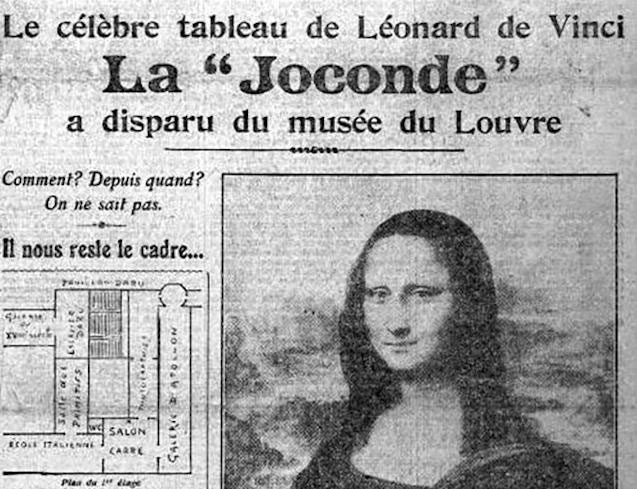
The theft made headlines in major newspapers around the world.
That was when Perugia realized that the item he had stolen was not just an outdated painting, within just a few short days, the Mona Lisa had become the most famous painting in the world.
Perugia kept the Mona Lisa at the bottom of a wooden chest in his boarding house. When the Paris police interrogated him in November 1911 as part of a broader investigation into Louvre staff, he candidly stated that he had only learned about the theft through the press and that the only reason he was late for work on Monday was that he had been drinking the night before.
No one suspected his words. The police quickly dismissed Perugia and instead arrested artist Pablo Picasso and poet Guillaume Apollinaire because both were friends of another thief who had previously stolen works from the Louvre. After an investigation, both were released.
In December 1913, after 28 months of hiding, Perugia left his boarding house in Paris with the chest containing the painting to go to Florence, where he had arranged to meet an art dealer. However, he could not have anticipated that this dealer would quickly call the police upon seeing the famous painting.
After a brief trial, Perugia finally confessed, surprisingly receiving only an 8-month prison sentence for causing such a sensational case.
Thanks to this famous theft, the Mona Lisa became a global icon. Amid public anticipation, the painting returned to the Louvre and attracted hundreds of thousands of visitors within the first two days.
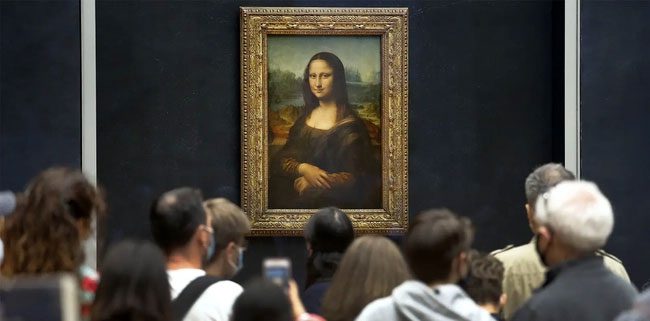
Today, the Mona Lisa masterpiece attracts millions of visitors each year.
Beyond the official reports, conspiracy theories also emerged shortly after the painting’s disappearance. Was it all a hoax? The New York Times at the time even speculated that restorers had damaged the Mona Lisa, forcing the museum to fabricate a thrilling theft story.
Even after the painting returned, the world remained skeptical: How could an ordinary carpenter manage to dismantle such a complex frame by himself? For many years afterward, rumors circulated that an international gang of thieves had stolen the painting while Perugia was in Florence, and that the painting currently displayed in the museum was merely a fake.
But regardless of the underlying mysteries, historians must acknowledge that the theft was the unintentional catalyst that transformed the Mona Lisa into the symbol of world art that it is today.





















































